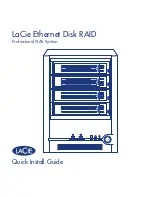
Chapter 3 Configuring Your Library
Working With User Accounts
Scalar i500 User’s Guide
96
• The library supports user account information in the schema defined
by RFC 2307. User password schemes must be encrypted using UNIX
crypt. In addition, user names (uid) and passwords (userPassword)
must be created using lowercase characters to be compatible with the
library.
LDAP Server Guidelines
3
For LDAP users with user privileges, access to library partitions is
determined by group assignment on the LDAP server. Groups must be
created on the LDAP server with names that correspond to the library
partition names. Users with user privileges must be assigned to these
groups on the LDAP server to have access to the corresponding partitions
on the library. LDAP users with administrative privileges have access to
all partitions and administrative functions and do not need to be assigned
to partition-related groups on the LDAP server.
The
Login
screen displays LDAP login options only when LDAP is
enabled.
Configuring LDAP on the Library
3
Before configuring LDAP, obtain the following LDAP parameters from
your network administrator. You need to enter these parameters in the
Setup - Remote Authentication
screen on the web client:
•
Repository URI
— The Uniform Resource Identifier (URI) of the
LDAP server where user account information is stored. The URI
includes the LDAP server host name or IP address and can include
the LDAP server network port. Port 389 is the default.
•
Group DN
— the distinguished name that contains the groups.
•
User DN
— the distinguished name that contains the users.
•
Default domain
— the domain in which the user accounts reside (user
names and groups, including library user group and admin group
below).
•
Principle authorization
— an LDAP user login ID with permissions to
search the LDAP directory. The library logs into LDAP using this ID.
•
Credential authorization
— the password for the principal
authorization login ID.
















































